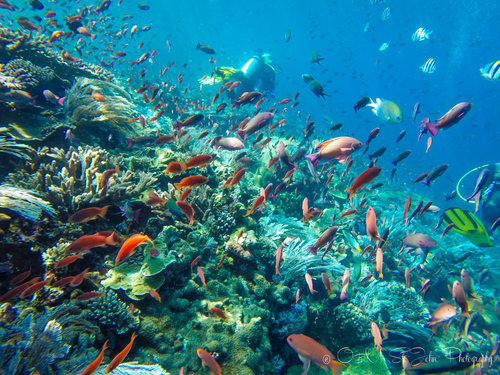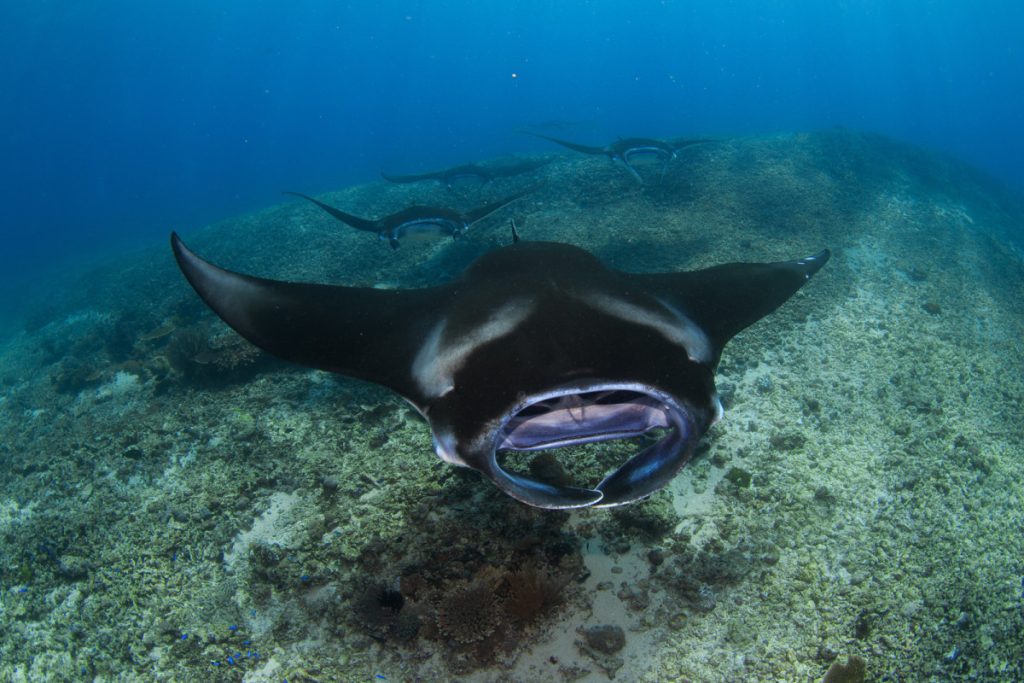Dive Site on Komodo, Meet Amazing Aquatic Wildlife
Tourists to the Komodo National Park in NTT can go diving in addition to having the opportunity to see the unique Komodo dragons. Amazing underwater charm exists. There are various reasons why the dive site on Komodo National Park can be so worldwide. Komodo National Park has listed as a UNESCO World Heritage Site since 1986. There is a lot of rare aesthetic value and natural beauty to be enjoyed there.
The world’s coral reefs and underwater ecosystems are regarded as some of the best. The underwater national park is home to 385 different types of coral reefs, 70 different kinds of sponges, numerous kinds of seaweed, and thousands of different fish species.

Dive site on Komodo Island can be found at depths of up to 150 meters. The temperature is between 25 and 29 degrees Celsius, and the salinity is up to 34 ppt. It is perfect for diving. The most unique dive site of all is Komodo Island, which is in the Wallace Line’s transition zone and hosts a variety of tropical plants and animals that are typical of both Southeast Asia and Australia.
These Amazing Aquatic Wildlife Dive Site on Komodo
Hawksbill Turtle
Additionally, Komodo Island serves as a habitat for the Hawksbill Turtle (Eretmochelys imbricata). The occurrence of Hawksbill Turtles in the wild is extremely uncommon. The Hawksbill Turtle typically has a flat body shape with an arm-like carapace and fins. The Hawksbill Turtle can travel throughout the Pacific Ocean and will eventually return to Komodo Island, where it was born, to lay its eggs.
Manta Rays
Manta Point in Komodo National Park is a popular location for snorkeling and diving with manta rays because it allows visitors to get up close and personal with these stunning and unusual fish.

This enormous fish frequently surface-dives and makes an appearance. November is the best month to search for mantas in this area. The length of this ray’s body, measured from the tip of one pectoral fin to the other, is 7 meters. The 3 tons mark is the heaviest manta weight ever recorded.
Whale Shark
The whale shark (Rhincodon typus) is the hugest fish on earth. The whale shark can open its mouth up to 1.5 meters wide, and its body length can reach an average of 5 to 10 meters and a maximum length of 20 meters. He can potentially weigh up to 19 tons. Because whale sharks are known as “filter feeders,” or small species. They eat zooplankton, small fish, and fish eggs, they have the unusual behavior of not attacking humans.
The markings on the whale shark’s body are one of its most striking features. Because each whale shark has a unique pattern. These white stripes could also serve as the animal’s identification. Therefore, do not be shocked if the whale shark is sometimes referred to as the leopard shark.
Dolphin
They can be located along the shipping lanes if you are using a pinisi boat to navigate the Komodo National Park’s waters. Dolphin pods frequently show up and jump on the water’s surface. An adult dolphin’s body can measure up to 4 meters. These mammals frequently swim alongside ships and are regarded as intelligent mammals.